Tyan Transport HX TS75-B8252 Internal Hardware Overview
Opening the cover of the Tyan Transport HX TS75-B8252 we see a fairly standard 2U server layout.
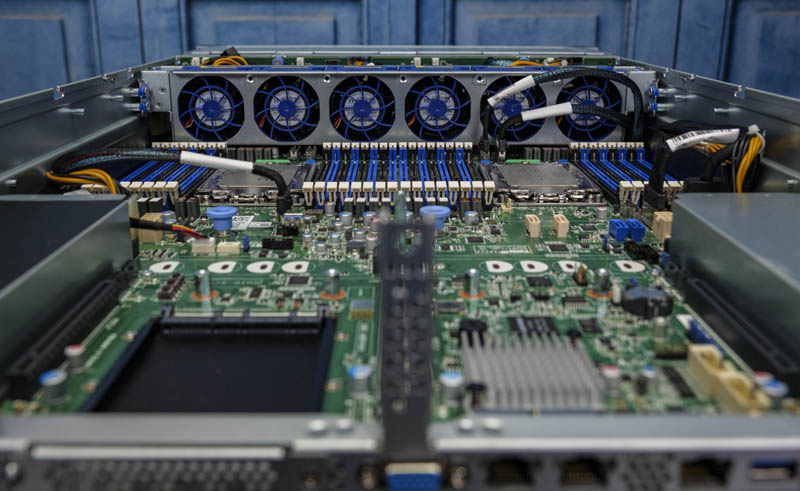
Behind the drive bays, we see the hard drive backplane. This backplane is held in by thumbscrews which makes it very easy to service. This is the piece that provides the flexibility to use both SATA/SAS and NVMe in the front bays.
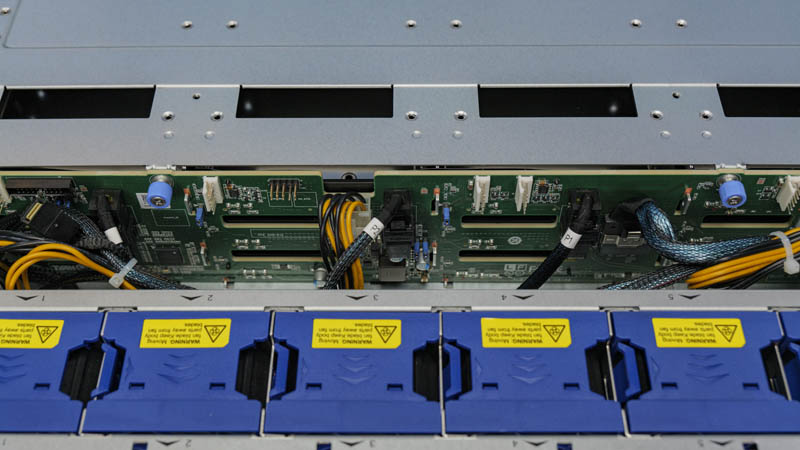
Behind the drives are the fans. These are 60mm hot-swap units that are actually smaller than many of the fans we see in 2U systems. The reason for this is that the fans sit over the front of the motherboard in a housing. While we are showing the hot-swap fan here, the entire assembly can be popped out by removing two clips at either end to allow easy access to the motherboard below. Tyan did a great job on this design.
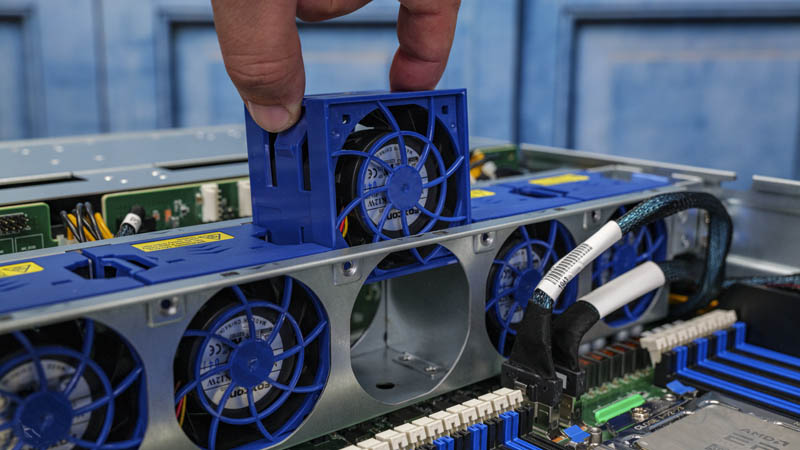
Those fans immediately cool the CPUs and memory. There are two AMD SP3 sockets designed for EPYC 7002 processors. In theory, this server should also be able to support EPYC 7003 processors codenamed “Milan” when they are launched later this year and available after that. Each CPU socket gets a full set of 8 channel memory with 2 DIMMs per channel (2DPC.) As a result, we get a total of 16 DIMMs per socket and 32 DIMMs total. This gives a maximum of 8TB of memory which is the maximum for the AMD platform.
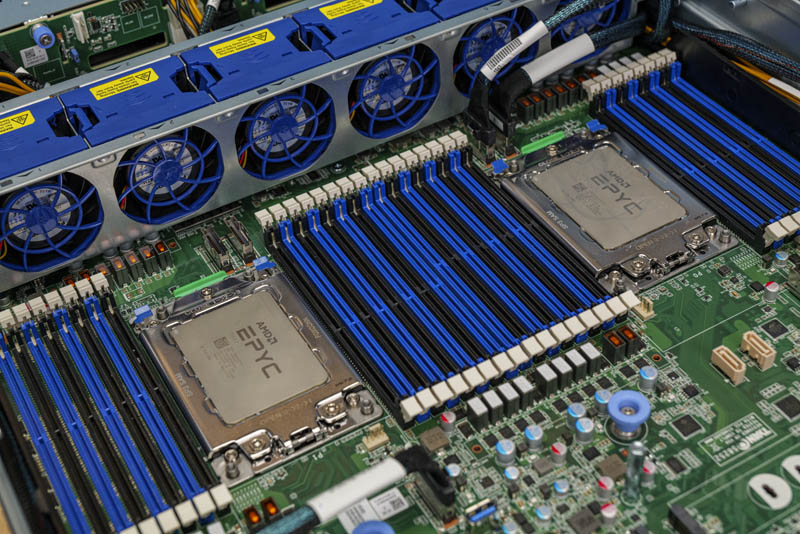
Behind the CPUs, there is a PCIe riser complex. There are PCIe Gen4 x16 low profile slots that sit over the CPUs. The middle risers each have a PCIe Gen4 x16 full-height slot and one has an additional x8 slot. That gives us five PCIe Gen4 slots (4 x16, 1 x8) to work with in this platform. These risers optionally can be ordered with eight PCIe slots by splitting some of the x16 slots.
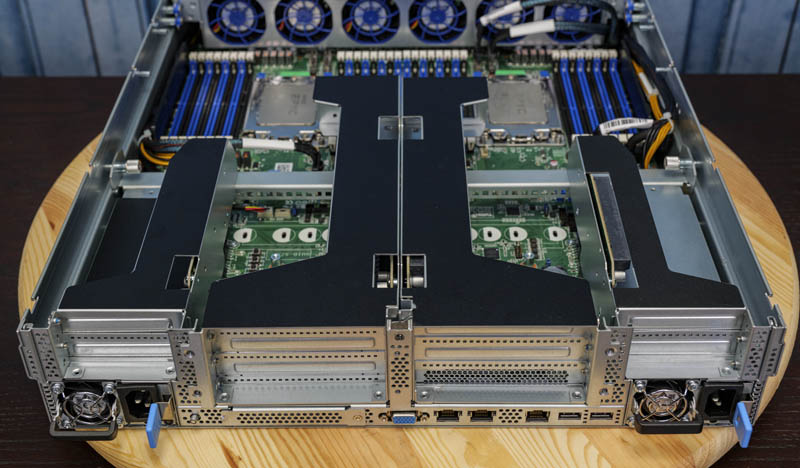
Tyan has designed the system for GPUs. For example, there are GPU power connectors on the motherboard PCB strategically located to have short-run PCIe cables for GPUs. The middle risers also have rear mounting points for full-length PCIe cards such as GPUs.
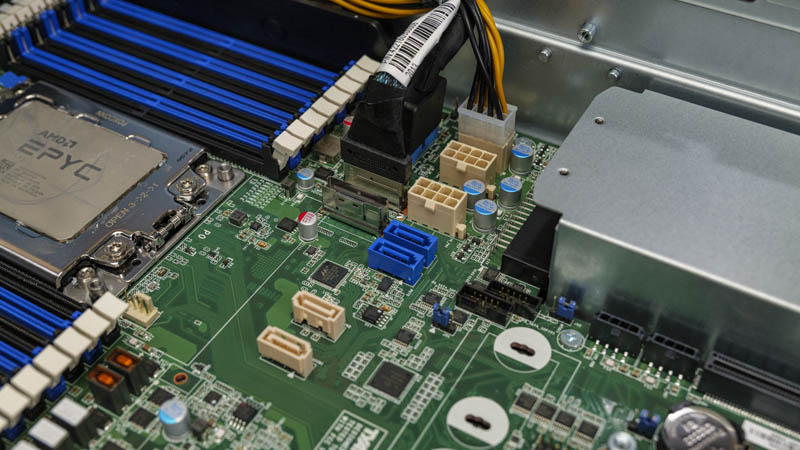
On the storage side, you may have seen the SATA ports above. There are four internal SATA slots driven by a Marvell B88SE9235 controller. One can use, for example, two of these SATA ports for SATADOMs as redundant boot options.
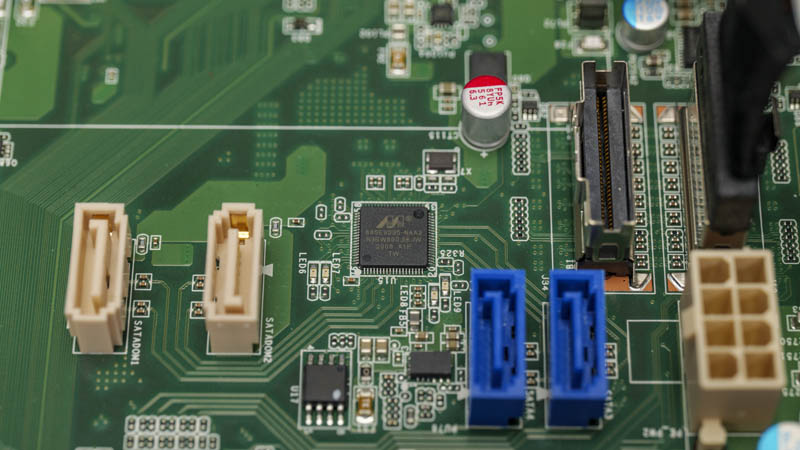
Other internal storage options include two M.2 SSD slots in the middle of the motherboard. These two M.2 slots can handle NVMe SSDs that are up to M.2 22110 (110mm) in size. Some applications will use these as boot devices while others will use them as cache storage for hard drives that are found on the front hot-swap bays.
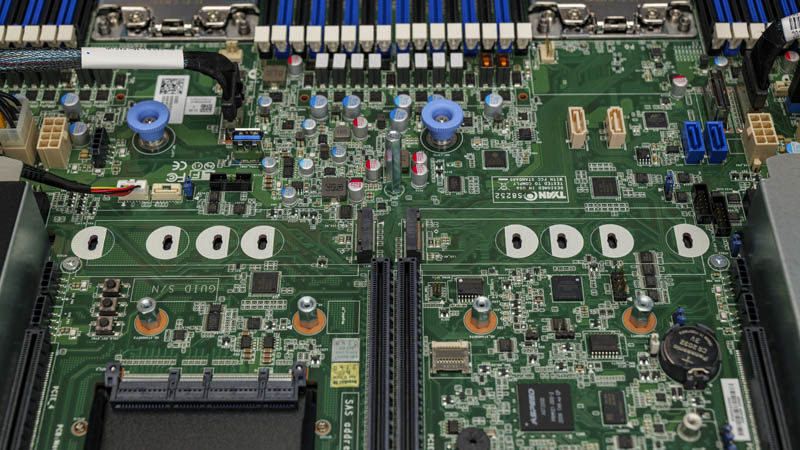
There is an OCP NIC 3.0 slot on the motherboard as well. With the AMD EPYC 7002 CPUs, this is a PCIe Gen4 x16 capable slot. It can therefore run dual 100GbE ports or a single 200GbE port at full speed which is a big change from previous generations.
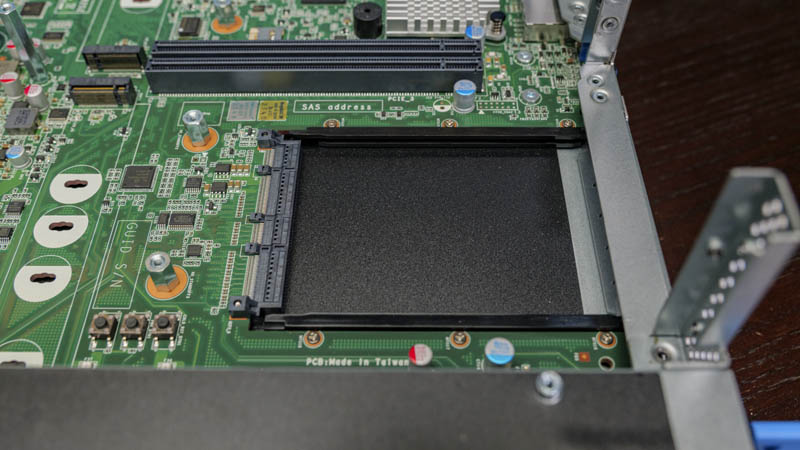
The Intel X550 is the IC under the heatsink. AMD EPYC designs integrate what Intel exposes as a platform controller hub or PCH into the CPU which removes other heatsinks from the motherboard. This 10Gbase-T controller is a big base-level functional upgrade over lower-end solutions with 1GbE controllers such as the i210.
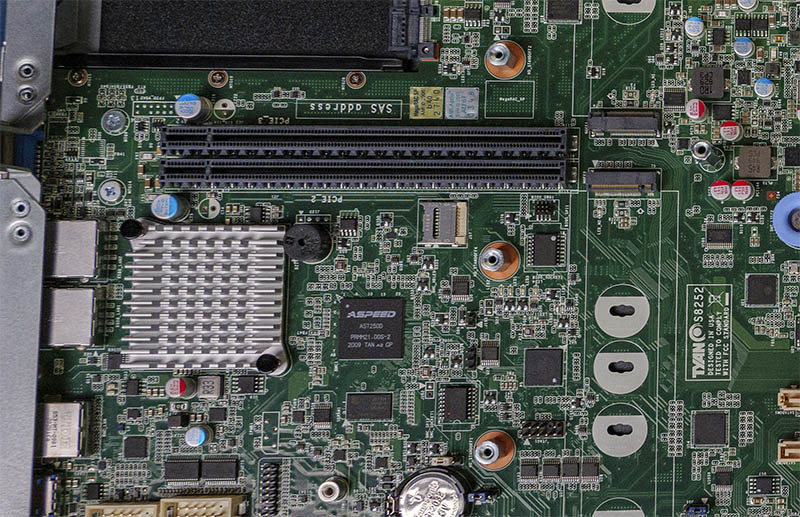
Another feature one can see here is the ASPEED AST2500 baseboard management controller. We are going to discuss the BMC in our management section.
Now that we have looked at the system’s hardware, it is time to test the server.




I come to STH to read server reviews. What keeps me staying is that I’m leaving feeling like I’ve learned more about the industry trends than anywhere else.